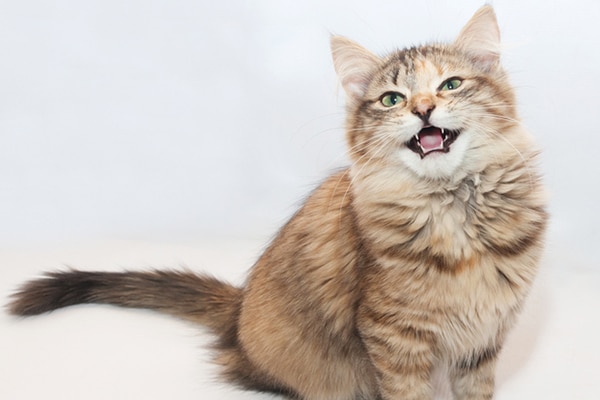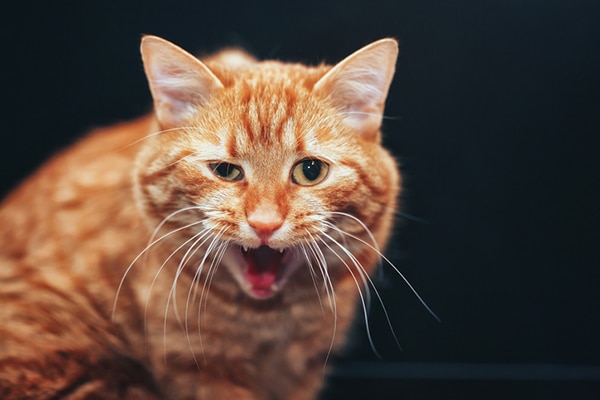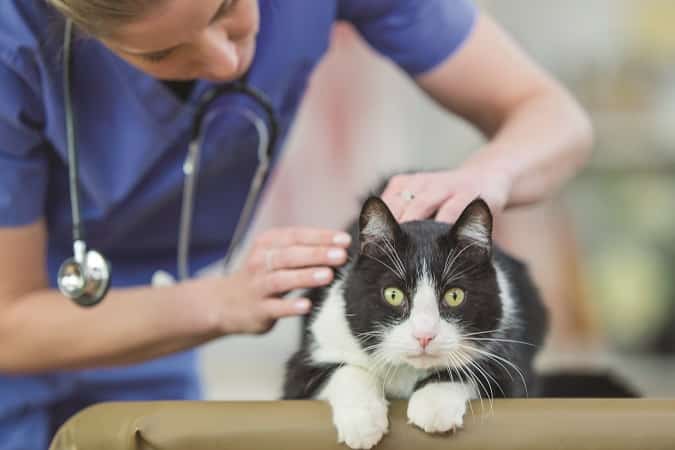In my role as an emergency veterinarian I treat some very sick cats. And I also meet some cat owners who feel very guilty. They wonder whether their cats might not have gotten so sick if they had recognized earlier that a problem was developing. Although some cat emergencies come on suddenly and are anything but subtle, it is true that many other cat emergencies start with vague symptoms.
It is certainly true that early recognition of subtle cat emergencies will improve the chances of a good outcome. But owners should not feel guilty if they fail to recognize these subtleties — cats don’t come with warning labels, and a person who doesn’t know the symptoms can’t be expected to recognize them (and, by definition, subtle symptoms are hard to recognize). For instance, I owned cats — including males — for 25 years before I knew that any urinary irregularity whatsoever in a male cat could be an emergency.

One way to determine if it’s a medical emergency or not? Examine your cat’s gums. Photography by annadarzy/Thinkstock.
Some helpful hints for determining cat emergencies that need your vet’s attention ASAP
The following list is designed to help you recognize cat emergencies that always warrant an immediate trip to the vet. However, it is not exhaustive, and you may find yourself in an ambiguous situation not covered on the list. If you are wondering whether you need to get out of your pajamas and head to the emergency cat vet in such a situation, there are some guidelines you can follow.
One useful indicator of cat health is the color of the gums. Lift your cat’s lip and look at his gums now. They should be pink and moist. Check them regularly, and you’ll get a sense of what they look like normally. If you suspect your cat is sick and the gums are pale, grey, blue or bright red, then your cat most likely is in trouble (although you should be aware that your cat might still be in trouble even if the gums are their normal pink color).
Remember as well that you are always free to call your cat vet or your local emergency clinic to talk about any ambiguous situation. The staff should be able to offer guidance.
Finally, remember that when in doubt it is always safest to have a vet evaluate your cat. A physical exam that reveals nothing wrong causes no harm; doing nothing about a critical situation can lead to a fatal outcome.
Now let’s list some of the most common and serious cat emergencies:

Difficulty breathing is usually a medical emergency in cats. Photography by Valery Kudryavtsev/Thinkstock.
1. Difficulty breathing
This is the most urgent emergency any individual — cat, dog or human— can face. Death occurs after three minutes without breathing, so cats with breathing difficulties are on the edge of disaster. Breathing problems in cats can be hard to recognize at first. Symptoms to watch out for are heaving sides, breathing with the mouth open, coughing, wheezing, abnormal respiratory noises, and the catch-all appearance of “breathing funny.”
2. Abnormal urination in male cats
This has the potential to be a symptom of one of the most serious cat emergencies any feline faces: urinary obstruction. This condition, which is fatal if not treated, occurs when cats are unable to urinate. For anatomical reasons, it occurs almost exclusively in males.
Cats with the condition suffer agonizing pain, and then rapid progression to kidney failure, potentially bladder rupture, and high blood-potassium levels that cause cardiac arrest. Initial symptoms may be subtle: Affected cats may urinate outside the litter box, strain but produce only small quantities of urine, vocalize, or groom their genitals excessively.
Therefore, any male cat with any urinary irregularity whatsoever should be checked by a vet immediately. Be aware that female cats with urinary irregularities should also see the vet. They are not likely to die from the problem, but they are likely to be suffering from discomfort that warrants treatment.
3. Signs of severe pain or obvious distress
Bring your kitty to an emergency vet immediately if you notice this one. Pain itself always warrants treatment, but it also can be a sign of more serious problems such as urinary obstruction (see above) or aortic thromboembolism (see below). Symptoms of pain and distress include vocalizing (howling), panting, hiding and overreacting to contact with a painful area.
4. Sudden paralysis of the hind end
While we’re on the subject of pain, this is one of the most truly painful cat emergencies: aortic thromboembolism, or ATE. ATE is a complication of heart disease in cats in which a blood clot lodges in the rear (usually) legs. It causes sudden paralysis of the hind end. Affected cats usually will pant, vocalize and show other signs of distress. It requires immediate veterinary attention.

Have a cat that won’t eat? It might be time to see the vet. Photography by aleg baranau / Shutterstock.
5. Stopping eating and/or drinking
A cat who won’t eat often means serious trouble. It is not normal for any individual to go a full day without eating when food is available, and not eating can be a symptom (kidney failure, complications of diabetes and intestinal obstruction) and a cause of (fatty liver) major health problems.
6. Protracted vomiting and/or diarrhea
This is among the cat emergencies that require immediate veterinary attention, especially when blood is present. Almost all cats occasionally yak or have soft stools, and such incidents usually aren’t emergencies. But cats who vomit repeatedly or have blowout diarrhea should see the vet immediately.
7. Known ingestion of toxins
Ingestion of toxics such as lily or antifreeze should be treated immediately. Rapid action can dramatically improve outcomes in many different types of toxicities.
8. Profound lethargy or collapse
This is among the cat emergencies that should trigger an urgent trip to the vet. Profound lethargy often manifests as “not moving,” hiding in one room for a protracted period, and not reacting to stimuli (such as the can opener or the dog) in a normal fashion.
9. Seizure
Although a solitary seizure is not likely to be life threatening, owners should be aware that seizures often come in clusters that get worse over the course of several hours. They also can be a symptom of exposure to toxins such as mold or low-quality flea control products. Cats who suffer a seizure should go straight to the vet.
10. Major trauma
This should always trigger a veterinary visit. Owners of cats with gaping wounds or massive hemorrhage usually know this intuitively. However, sometimes cats who have fallen from height, been hit by cars, struck by garage doors or attacked by large dogs can have major internal injuries yet appear unharmed after the incident. Any time you are aware of such an occurrence, your cat should be checked out.
11. Fights with other cats
Cats who have been in fights with other cats should see the vet sooner rather than later. Cat fight wounds are relatively easy to treat with antibiotics if they are caught early. If a delay occurs, an abscess may develop that requires anesthesia and surgery.
The bottom line on cat emergencies that need immediate vet attention
Cat owners should remember that the above list is not exhaustive; it is not possible to list (or even imagine) all cat emergencies. I wish to reiterate that if you are in doubt, you should call a vet, or simply go to the vet.
This piece was originally published in 2016.
Thumbnail: Photography by DoraZett/Thinkstock.
Read Next: What is a Veterinary Specialist? And When Does Your Cat Need to See One?
